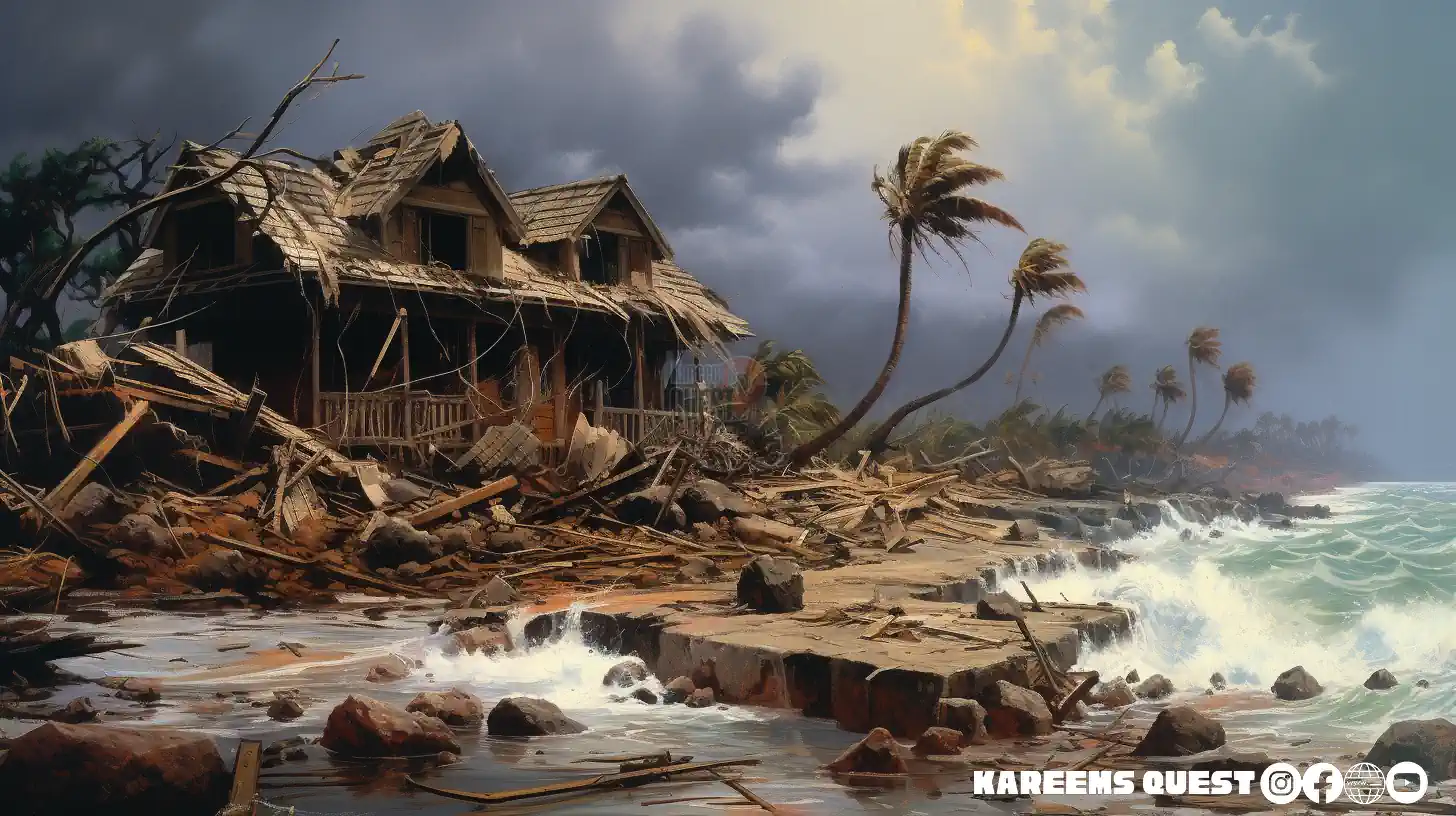Hurricane Beryl’s Impact on Jamaica
Hurricane beryl and jamaica – Hurricane Beryl, a Category 1 hurricane, made landfall in Jamaica on July 5, 2023, bringing heavy rainfall, strong winds, and storm surges. The hurricane caused significant damage to the island’s infrastructure, homes, and businesses.
Hurricane Beryl had a devastating impact on Jamaica, leaving a trail of destruction in its wake. However, amid the ruins, a glimmer of hope emerged in the form of a sepia bride photographer who captured the resilience and beauty of the Jamaican people in the aftermath of the storm.
Her photographs became a testament to the strength of the human spirit in the face of adversity, inspiring hope and renewal in the hearts of those affected by Beryl.
The hurricane first made landfall in the eastern parish of Portland, bringing with it sustained winds of up to 120 kilometers per hour (75 miles per hour) and heavy rainfall. The rains caused widespread flooding, which damaged roads, bridges, and homes. The hurricane also caused power outages and disruptions to water and telecommunications services.
The fury of Hurricane Beryl left a trail of devastation in Jamaica, its winds tearing through homes and uprooting trees. Amidst the wreckage, the work of the sepia bride photographer stood as a testament to the resilience of beauty. Their photographs captured the raw emotions and indomitable spirit of the Jamaican people, offering a poignant glimpse into the aftermath of the storm and the hope that would follow.
As the hurricane moved across the island, it weakened to a tropical storm, but it continued to bring heavy rainfall and strong winds. The storm caused further damage to infrastructure and homes, particularly in the central and western parishes of the island.
Response Efforts, Hurricane beryl and jamaica
The Jamaican government and international aid organizations responded quickly to the hurricane. The government deployed emergency personnel to the affected areas to assist with rescue and recovery efforts. The government also provided financial assistance to those who had been affected by the hurricane.
International aid organizations, such as the Red Cross and the United Nations, also provided assistance to Jamaica. The Red Cross provided food, water, and shelter to those who had been displaced by the hurricane. The United Nations provided financial assistance to the Jamaican government to help with the recovery effort.
Economic Consequences of Hurricane Beryl

Hurricane Beryl brought significant economic losses to Jamaica, particularly affecting key sectors such as tourism, agriculture, and infrastructure. The financial impact of the storm has been substantial, leaving the country with challenges in rebuilding and recovering.
Impact on Tourism
Jamaica’s tourism industry, a major contributor to the country’s economy, suffered significant losses due to Hurricane Beryl. The storm disrupted travel plans, leading to cancellations and postponements of bookings. Many hotels and resorts were damaged, requiring repairs and renovations. The loss of tourism revenue during the peak season had a ripple effect on other businesses, such as transportation, hospitality, and retail.
Impact on Agriculture
Agriculture is another vital sector of Jamaica’s economy. Hurricane Beryl caused widespread damage to crops, livestock, and infrastructure. The storm’s strong winds and heavy rainfall destroyed banana and sugarcane plantations, while flooding damaged rice fields and livestock farms. The disruption of agricultural production led to shortages and price increases for food items.
Impact on Other Sectors
In addition to tourism and agriculture, Hurricane Beryl also affected other key sectors of Jamaica’s economy. The storm caused damage to infrastructure, including roads, bridges, and power lines. This disrupted transportation and communication networks, hindering business operations and daily life. The financial losses incurred by the country include the cost of repairs, rebuilding, and compensation for affected individuals and businesses.
Lessons Learned from Hurricane Beryl: Hurricane Beryl And Jamaica
:quality(70)/d1hfln2sfez66z.cloudfront.net/11-12-2019/t_423d5e2948964ee2aff5c801c5f08a9b_name_CB725C2ADED4425FB11D26B8BA968321_1.jpg)
Hurricane Beryl, which made landfall in Jamaica in July 2022, served as a stark reminder of the importance of disaster preparedness and response. While Jamaica’s disaster management system proved resilient in many ways, the hurricane also exposed areas where improvements could be made.
Strengths of Jamaica’s Disaster Preparedness and Response Plans
- Early warning systems: Jamaica’s early warning systems, including weather monitoring and forecasting, were effective in providing timely alerts and warnings to the public.
- Evacuation plans: The country’s evacuation plans were well-coordinated and implemented, ensuring the safe evacuation of thousands of people from vulnerable areas.
- Community resilience: Jamaican communities demonstrated resilience and solidarity in the face of the hurricane, working together to support each other and respond to the emergency.
Weaknesses of Jamaica’s Disaster Preparedness and Response Plans
- Infrastructure vulnerability: Jamaica’s infrastructure, including roads, bridges, and buildings, proved vulnerable to the hurricane’s high winds and flooding, highlighting the need for more resilient infrastructure.
- Communication challenges: Communication systems were disrupted during the hurricane, making it difficult for emergency responders to coordinate and for the public to access essential information.
- Limited resources: Jamaica’s disaster response capacity was stretched thin by the hurricane, demonstrating the need for increased investment in disaster preparedness and response efforts.
Recommendations for Improving Jamaica’s Resilience to Future Hurricanes
- Invest in infrastructure resilience: Jamaica should invest in strengthening its infrastructure, including roads, bridges, and buildings, to withstand the impacts of future hurricanes.
- Enhance communication systems: The country should develop more resilient communication systems that can withstand hurricane-force winds and flooding.
- Increase disaster preparedness funding: Jamaica should increase its investment in disaster preparedness and response efforts, including training for emergency responders and stockpiling of essential supplies.
- Promote community resilience: The country should continue to promote community resilience by encouraging community-based disaster preparedness and response initiatives.